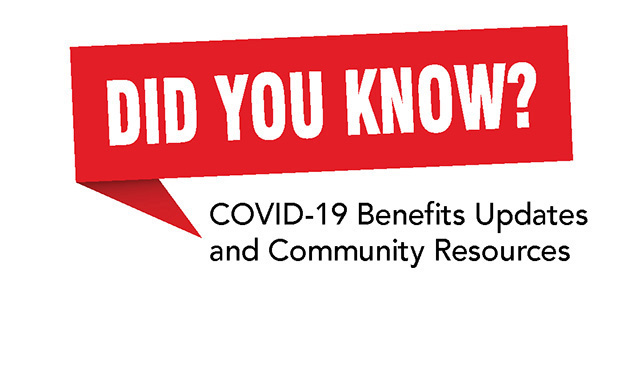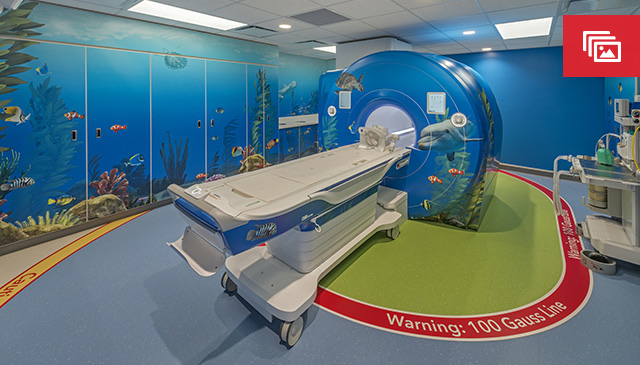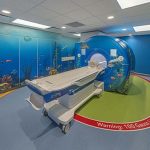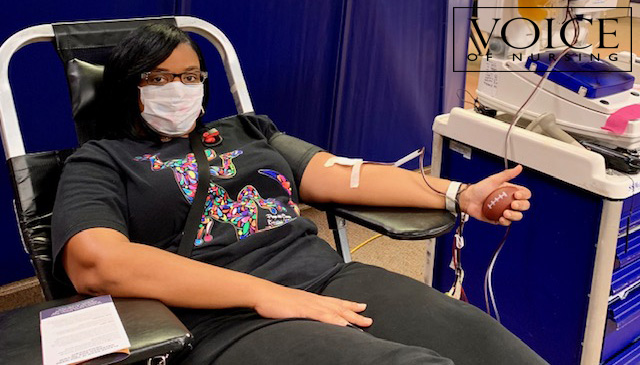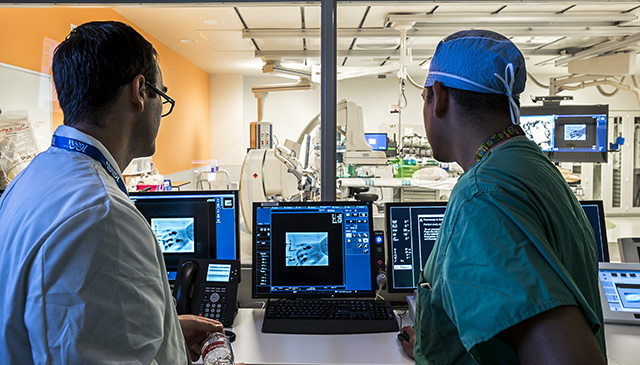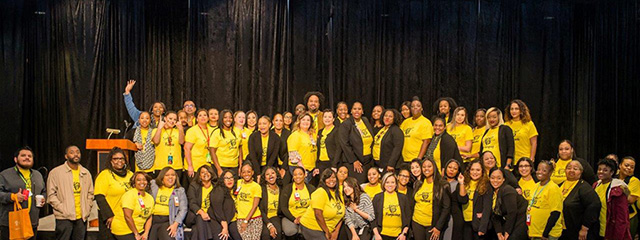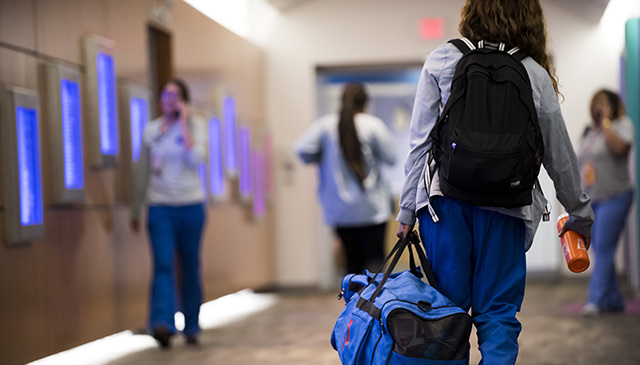
While we continue to safeguard our patients, families and staff from COVID-19, we must also make necessary preparations for this year’s hurricane season. According to StormGeo, Texas Children’s Meteorological data provider, the 2020 Hurricane Season, beginning June 1 and ending November 30, is expected to be above normal, producing up to eight hurricanes, four of which are predicted to be major storms.
Preparing for this year’s hurricane season will look much like it has in the past, but with a few tweaks due to the additional safety precautions and protocols we have in place due to the ongoing COVID-19 pandemic. These tweaks as well as tips on how to prepare yourself and your family for this year’s hurricane season are below.
“We understand that everyone is already in a heightened level of awareness and preparedness due to COVID-19. Hurricane season is something that occurs every year and we as an institution are consistently prepared and resilient no matter what it may bring,” said Aaron Freedkin with Emergency Management. “Texas Children’s has thorough hurricane plans in place and we are working to incorporate all appropriate COVID-19 precautions. Most importantly, we are confident that our One Amazing Team will rise to the occasion if we need to activate these plans.”
Employee Disaster Roster
First and foremost, we need employees to register for a team within the Employee Disaster Roster by June 12. Important considerations specifically for 2020:
- Staff who are flexed down to zero hours will not be required to register at this time
- Team selections should not be based on an employee’s current or future “flexed down” status
- Staffing decisions will be based on business and clinical requirements at the time of the disaster declaration
If you have not already done so, please go to the Employee Disaster Roster in MOLI and make your 2020 selection for the Prep Team, Ride-Out Team, and/or Relief Team. Any exemptions must be entered into the system and approved by your supervisor. Please contact the Organizational Resilience Department at EmergencyMgmt@texaschildrens.org with questions.
Ride-Out
As mentioned above, the size of the Ride-Out Team this year should it be called to action could be significantly smaller than in the past due to decreased clinical activity and heightened safety precautions. In addition, Texas Children’s has historically provided on-site accommodations for Ride-Out Team members. These accommodations will still be available; however, they will take social distancing into account. Organizational Resilience is working with Infection Control, Facilities and the Incident Command Planning Section Leadership to finalize these considerations and determine how they will be implemented.
Preparedness Presentations and Bridge Event
Normally, Organizational Resilience gives in-person hurricane preparedness presentations to requesting departments. This year, these presentations will be given virtually via Microsoft Teams. To request a presentation, please email EmergencyMgmt@texaschildrens.org.
The annual Hurricane Preparedness Bridge Event will also be virtual this year via Microsoft Teams Live. The event, scheduled for June 11 from 10 a.m. to 1 p.m., will include presentations from Texas Children’s Wellness Team, the Employee Assistance Program and the National Weather Service. Additional information about the virtual event will be communicated soon.
Personal Preparedness
When a storm or hurricane threatens, the best thing you can do is be prepared. That means getting your home and belongings ready to withstand wind and water, and ensuring the safety of your family, pets and loved ones. Once all of this is done, you can focus on helping our patients and families continue to receive the medical care they need. Here are some simple steps to help you get prepared.
Evacuation
- Sign up for emergency alerts. You can find them at ready.gov/prepare.
- Check with Texas Department of Transportation or Office of Emergency Management for evacuation routes near you.
- Know where your nearest emergency shelters are. Download FEMA’s app at fema.org/mobile-app.
- Keep your gas tank full and buy extra gasoline for your vehicle or generator. Be sure to store it safely in approved containers.
At Home
- If necessary, board up your windows.
- Keep gutters and drains free of debris.
- Install “check valves” in sewer lines to prevent floodwater from backing up into your drains.
- Set your freezer and refrigerator to the coldest setting to make food last as long as possible without electricity.
- Put containers of water in your freezer to fill up any extra space.
- Fill bathtubs with water which can help with cleaning and flushing toilets.
- Bring in all loose objects from your yard and patio.
- Charge your cellphone and an extra battery. Buy a car charger if you haven’t already.
- Program emergency contacts into your phone.
- If you have an emergency generator, test it to make sure it works properly. Buy extra cans of gasoline in case of power loss after a storm.
Protect Important Documents
Store the following documents in clear, portable, airproof and waterproof containers:
- Passports and Social Security cards.
- Prescription information and immunization records.
- Customer service phone numbers and account numbers for banks and credit cards.
- Birth, marriage and death certificates.
- Insurance policies, contracts, deeds, stocks, bonds and other valuables.
Communication
- During and after a crisis, people can become separated and communication lines can become jammed. Avoid chaos by developing a plan beforehand.
- Establish a place to meet near home.
- Select a friend or relative who lives outside the region to be your contact.
- Take a cellphone charger when you evacuate.
Pantry
- Water – Buy and store plenty of extra water.
- Food – Purchase enough for at least three days.
- Utensils -Don’t forget a hand-held can opener.
- Fuel – Have wood, charcoal or propane handy.
- Pets – Make sure you have extra food and water for your pets.
- Medication – Refill prescriptions and have other regularly used medical supplies on hand.
Disaster Bag
If you are called to one of our locations to help keep operations up and running during a storm, you will want to take a piece of home with you to make your stay as safe and comfortable as possible. That’s why having a disaster preparedness bag ready to go is important. Here are some of the things you should pack.
- Your Texas Children’s/Baylor employee badge
- Sleeping bags or linens, blankets, and a pillow
- Change of clothing, uniforms, undergarments and sleepwear
- Comfortable shoes and socks
- Personal toiletries, towels and washcloths
- Prescription and over-the-counter medications
- Cash and small change
- Nonperishable* food, special dietary requirements and snacks
- Bottled water
- Diversional activities (no electronic devices)
- Phone, charger and list of important phone numbers
- *Examples of nonperishable food items include:
- Bottled water, Gatorade, box juices
- Peanut butter
- Nuts
- Granola bars
- Any type of breakfast bar
- Baked beans
- Tuna or other canned meats
- Jerky
- Crackers
- Fruit cups
- Fresh fruit, e.g., bananas, apples
- Puddings
- Hard candies
Update Your Information
Making sure your contact information is up to date in MOLI is key to receiving essential communications during a hurricane or other emergency. You don’t want to miss out on key information. To update your information, click here.
For more information, go to Texas Children’s Emergency Management page on Connect.


